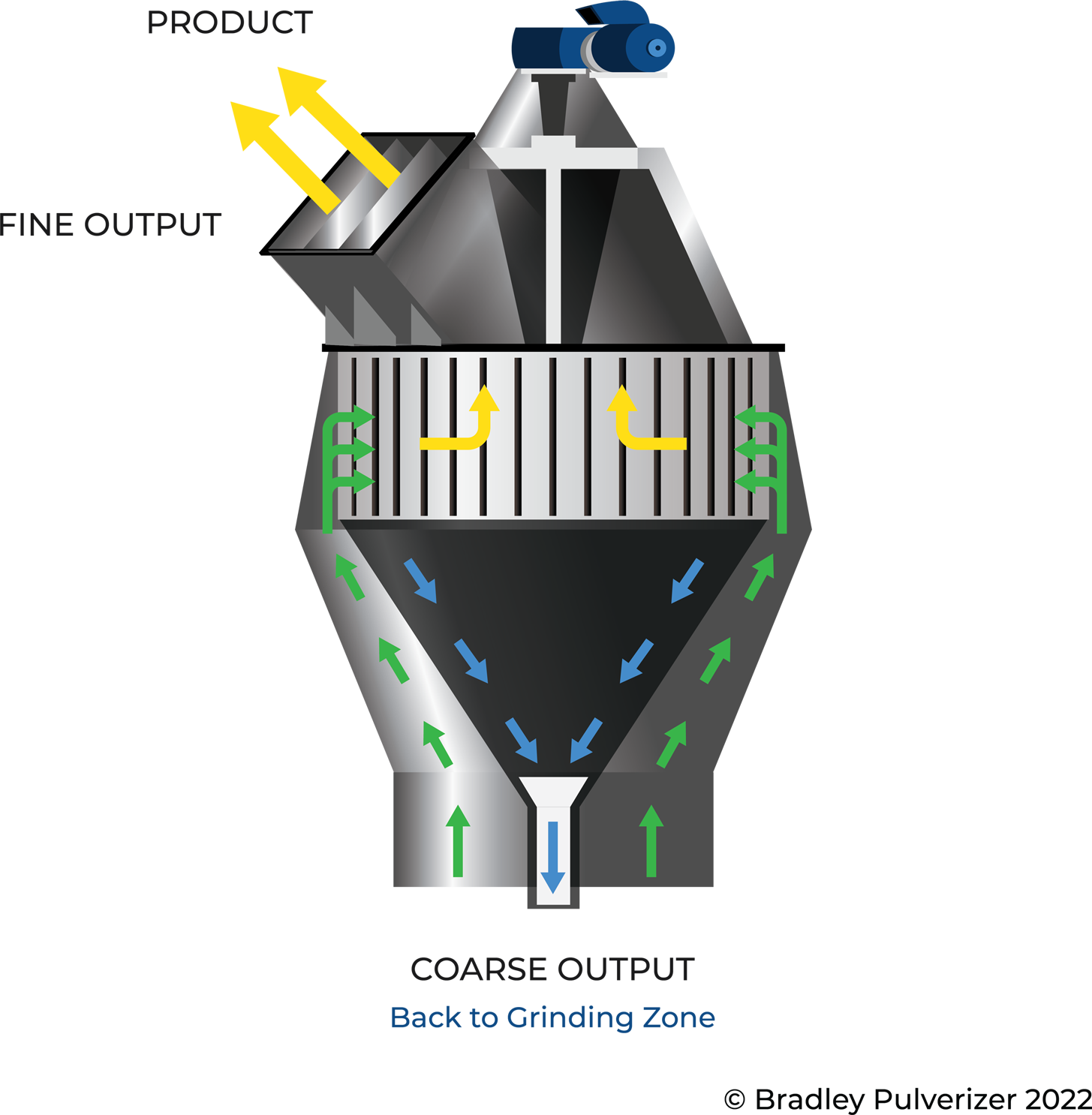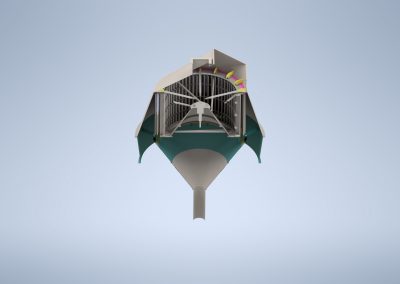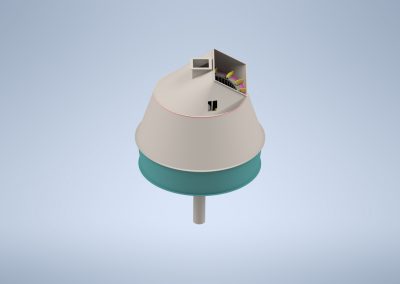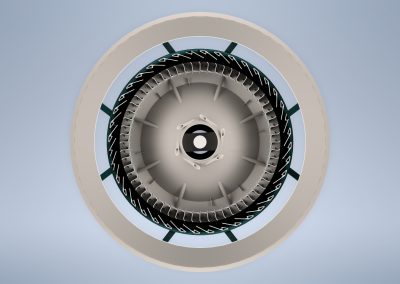BLVT Classifiers

High Efficiency Classification for Improved Particle Cut Size
Efficient classification involves accurately separating desired particle sizes from a moving airstream. The key to efficient separation is a design configuration where the forces acting on the particles are controlled in a continuous and uniform manner. For highest efficiency to be achieved, a very distinct relationship of velocities and forces needs to be maintained in the classifying zone.
Bradley Low Velocity Technology
The Bradley Low Velocity Technology (BLVT) Classifier achieves high efficiency classification through our superior design. Hundreds of satisfied customers worldwide provide validation of the classifier’s efficiencies of improved material yields and throughput.. Because the BLVT classifier can be installed or retrofitted on any airswept mill, including pendulum roller mills, vertical roller mills and ball mills, it creates a quick payback period and high return on investment. Increased mill capacity can be achieved by upgrading an existing classifier or replacing a current one with a high-efficiency classifier, such as the BLVT. Capacity improvements can be expected in the 15% to 17% range. The superior design provides controlled and guided material flow right up to and through the classifier. This results in improved particle cut-size and overall improved classification performance. Additional benefits include reduced fan power and body wear due to the elimination of unnecessary recirculation of material.
BLVT Benefits
The BLVT Classifier offers additional benefits beyond those provided by other dynamic classifiers.
- Increased Production Capability or a Finer Grind Capability
- System Power Consumption Reduction
- Smooth System Operation – Less (Reduced) Vibration
- Reduced Wear on Mill Body and Components
- Easy to Retrofit on Existing Mills
- High Return on Investment/Low Investment Cost/Short Payback Period
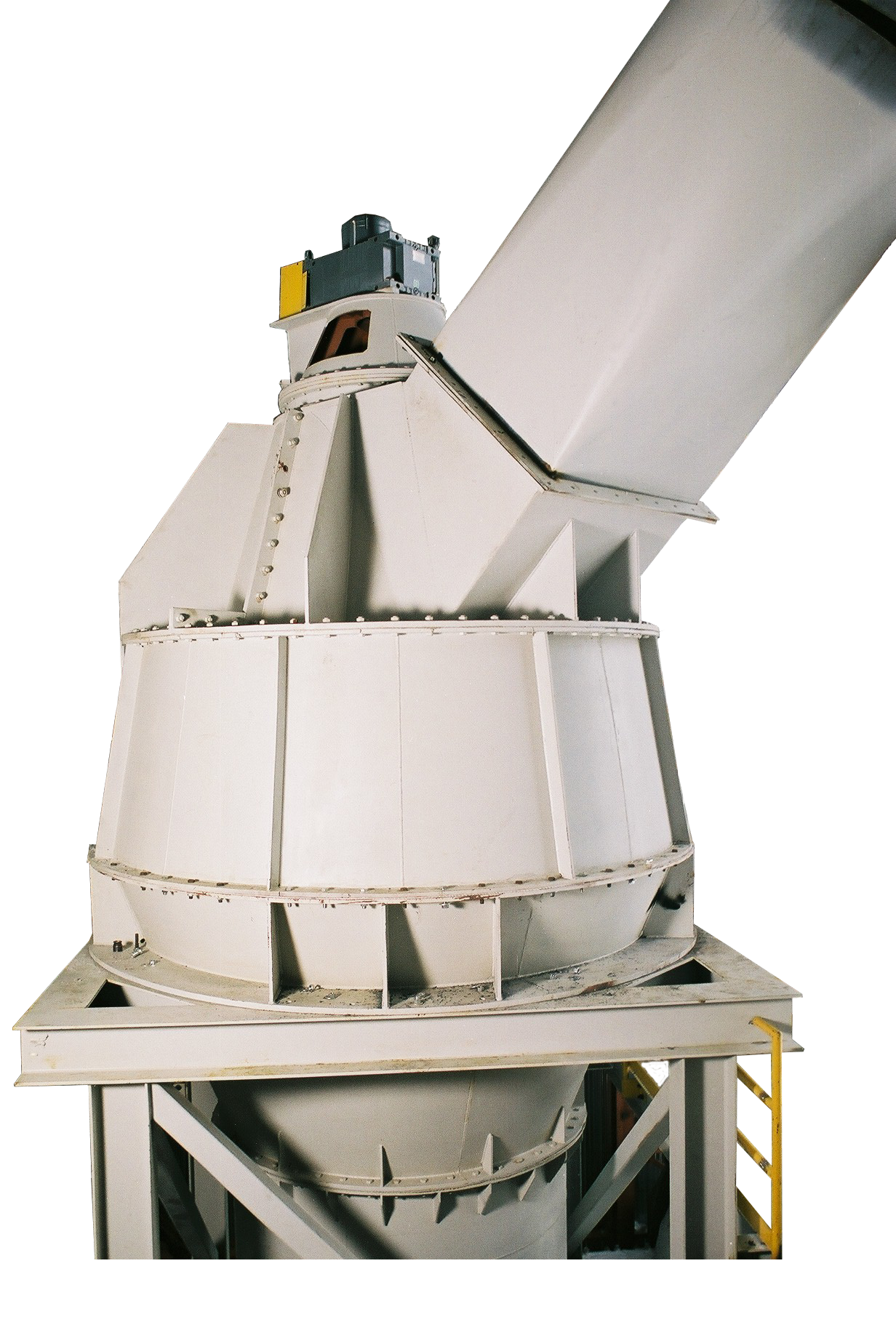
BLVT Classifier Concept
The BLVT Classifier is designed to optimize the air and material flow inside the mill and minimize unnecessary internal recirculation. This is accomplished by controlling the gas speed distribution of the classifier from material entry to exit.
Key Components:
- LV Pocket Guide Vane – unique design allows coarse material particles to circulate back to the mill for re-grinding
- Rotor – accurately controls fineness setting by easily changing the rotor speed
- Grit Funnel – controls air and material velocity up to the classifier inlet and through the guide vanes assembly, into the classification zone and directs rejected material back to the mill
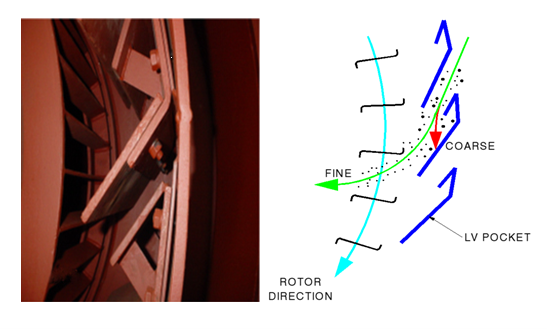
How It Works
This high efficiency classifying technology utilizes principles of both static separators and dynamic classifiers. The BLVT Classifier utilizes a turbine rotor surrounded by specialty pocket guide vanes. This two-layer classification system first rejects oversized particles with the pocket guide vanes then utilizes the separator rotor to further screen overly coarse particles.
The classification zone between the rotor and static guide vanes is engineered to provide the proper entrance angle and velocity combination so that shear forces can act at right angles to the airflow. The special design of the pocket vanes works as a coarse material trap. The oversized coarse particles are carried by the airflow into the classifier where it impacts the angled pocket vanes, loses velocity and falls down to the grit funnel.
The turbine rotor then provides an additional barrier that prevents oversized material from passing through. Rejected material is directed down to through center of a grit funnel back to the grinding chamber, without passing through turbulent air-material currents.
The turbine rotor accurately controls material fineness setting by changing rotor speed. Rotor speed can be varied by the operator in order to obtain the desired performance. Target sized fine particles are carried out through the separator rotor and up to the cyclone or bag filter collector.
The BLVT two-layer classification process has proven to be more effective solution than cage only classifiers or static separators.
